When most people hear the name Hvar, they think of Hvar town – which became famous for its gastronomy and club scene. But, Hvar island has so much to offer, which is why we love recommending Stari Grad as a stop on an itinerary. Discover the maze of picturesque Stari Grad streets which are filled with local konobas (taverns), churches, courtyards bursting with flowers, walls lined with fishermen’s nets, galleries, and more. The pace in Stari Grad is much slower compared to Hvar town which our guests often appreciate.
Recently, we organized a ‘FAM’ trip – which is when we invite brokers from around the world to come and experience our yachts and Croatia first-hand. Stari Grad was one of our stops, so we thought we’d share with you what a day in Stari Grad can look like.
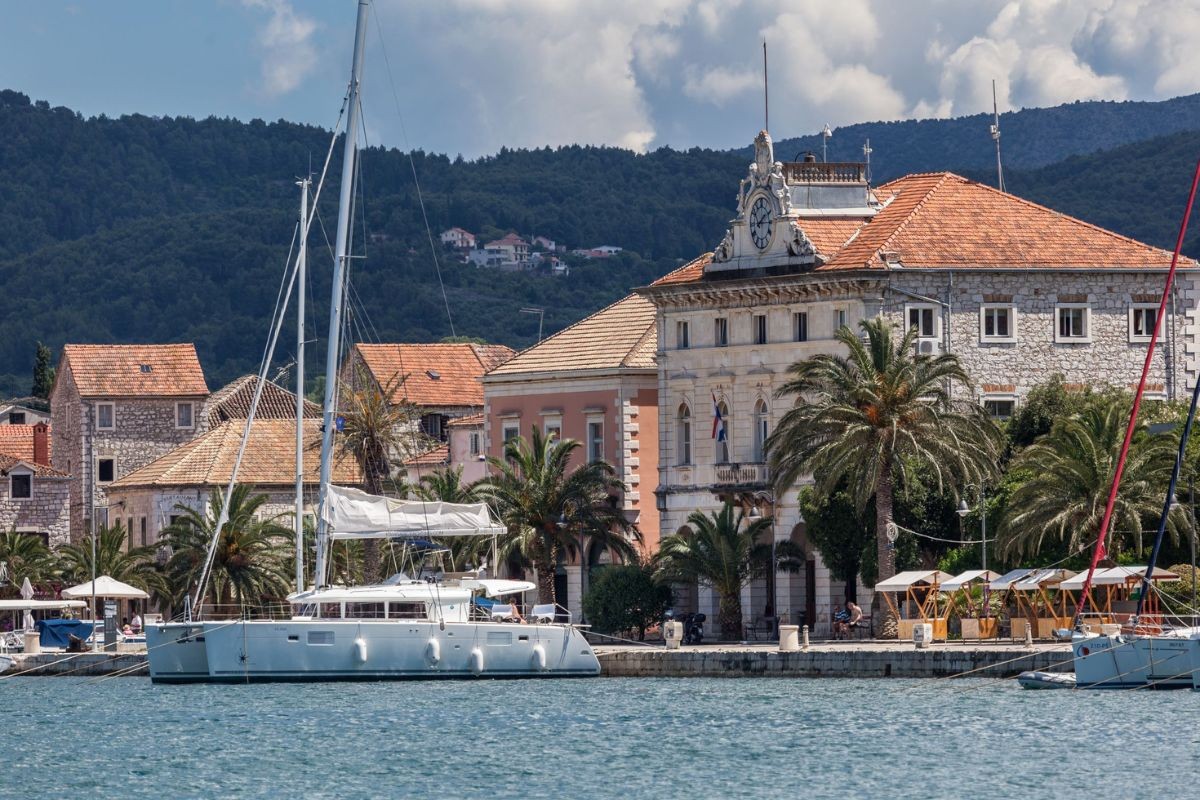
We docked after lunch, then we were met by local guides in front of our yacht because wanted to give the brokers an introduction to the incredible history of Stari Grad. Our guide on the day was Ana Kovacevic-Gamulin, a passionate local storyteller. Here’s the thing, Croatia has a rich history, and being able to tell that history in an interesting and engaging way is important – especially for people on ‘vacation mode’. This is why we have found some of the best storytellers to guide our groups, Ana is one of these people. After a short walk from the Riva, we stopped in front of the Hektorović Tvrdalj ‘castle’ built by one of Croatia’s most famous poets – Petar Hektorović (16th Century). The façade is unassuming but entering the courtyard is somewhat a surprise, you are instantly transported to another time and place. The space includes a fish pool framed by stone columns and arches and a botanical garden. On its own, the space is impressive and leaves you with a peaceful feeling – which is fitting as the space was meant to be a peaceful place for all visitors (man and animals alike). But it is only when you learn more of the story of Petar Hektorović and the significance of his works, does the space hold even more meaning.
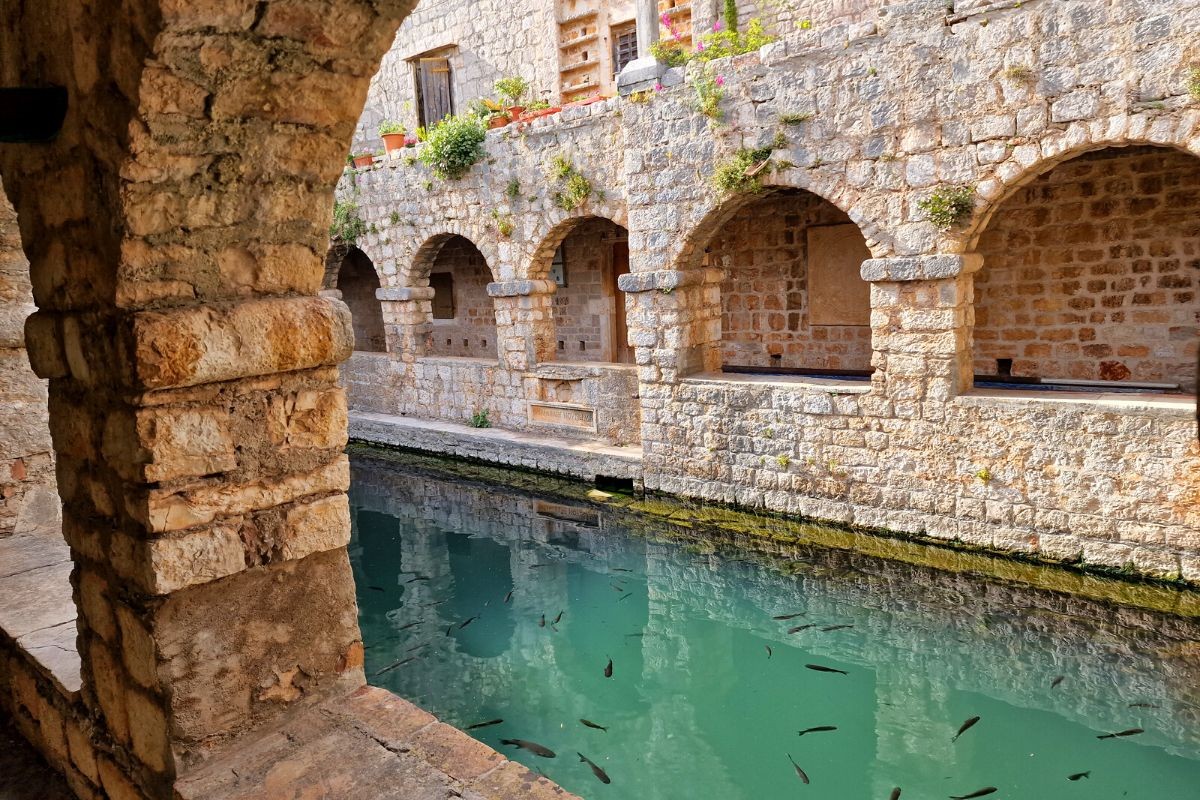
We slowly meandered through town taking in its beauty with Ana sharing tidbits of information as we strolled. At the end of the promenade, comfortable combi vans were waiting to drive us to the nearby town of Vrboska (8 km). Driving to Vrboska, the road takes you through the Stari Grad Plain, where farms, vineyards and olive groves line the road, offering a glimpse into traditional life. Seeing the land in this way, it is also quite clear to see why Hvar makes fantastic wines, one look at the landscape shows the rich red soil and variety of terroir ideal for vineyards. It is even more impressive to realize that the land has been farmed (and giving generously) since ancient times. Again, along the ride, Ana shared history, folklore, and unique insights into what it was like growing up as a child on the island of Hvar – and now raising a family of her own. Island life has its ups and downs, but the quality of life, nature, produce, and safety all sound idyllic, a ‘real paradise’ as Ana puts it. Listening to Ana makes you want to pack up your life and move to the island.
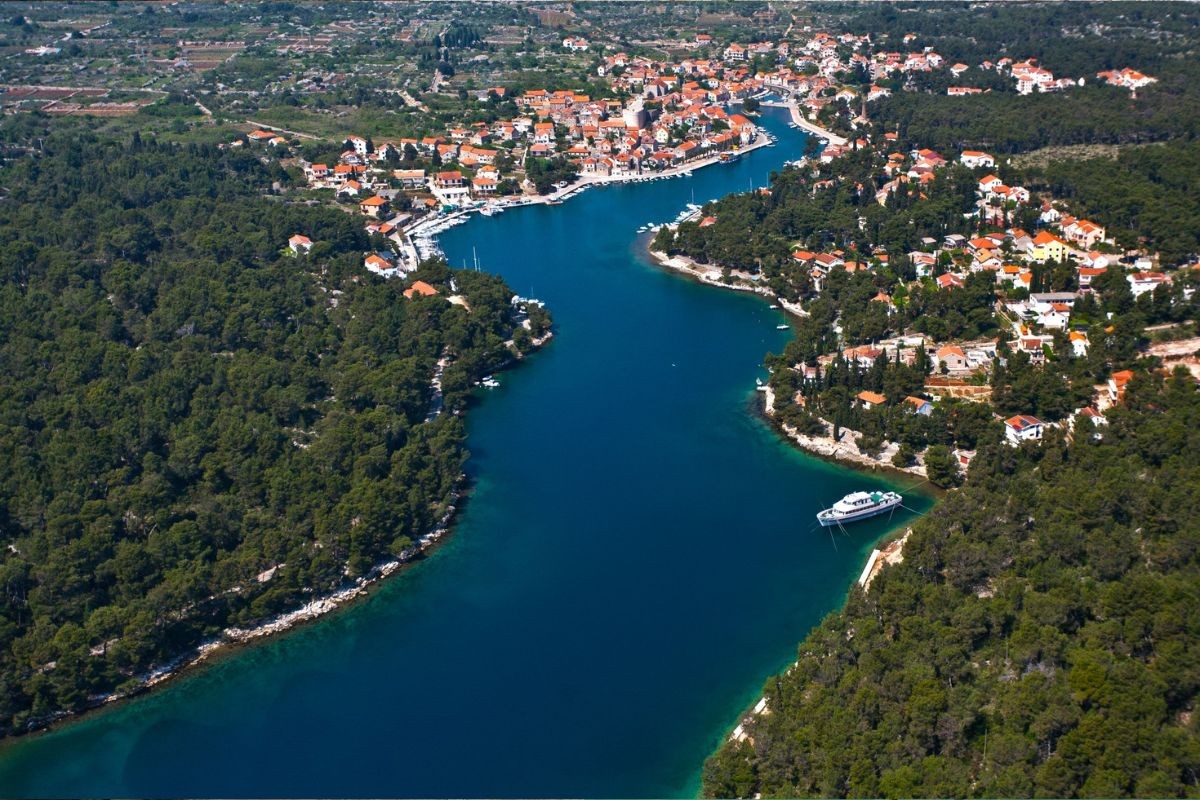
Arriving in Vrboska – Croatia’s little Venice, we walked for 5 minutes before coming to another unassuming green door, stepping inside we were met by a cute family-run winery and a table lined with glasses and local delicacies for a tasting. According to their bio and story, the Caric family has been ‘tending vineyards since time immemorial’, and in recent generations started making their own wine. They tend around 5 hectares of vineyards and grow several indigenous varieties like Plavac Mali, Bogdanusa, Kuc, Marastina, Darnekusa and Posip. We tasted their Sparkling, Posip, Rose and finished with two different Plavac Mali (one was barrique aged from 2013), all of this was paired with local delicacies like olive oil, herb infused cheese from island pag, salted anchovies and dark chocolate. This is another of our favourite aspects of Croatia, we don’t have many large modern wineries. Most of the wineries in Croatia are small and family-run, and we just love that you can happen across a green door in the middle of the street and walk into a tasting room with world-class wines.
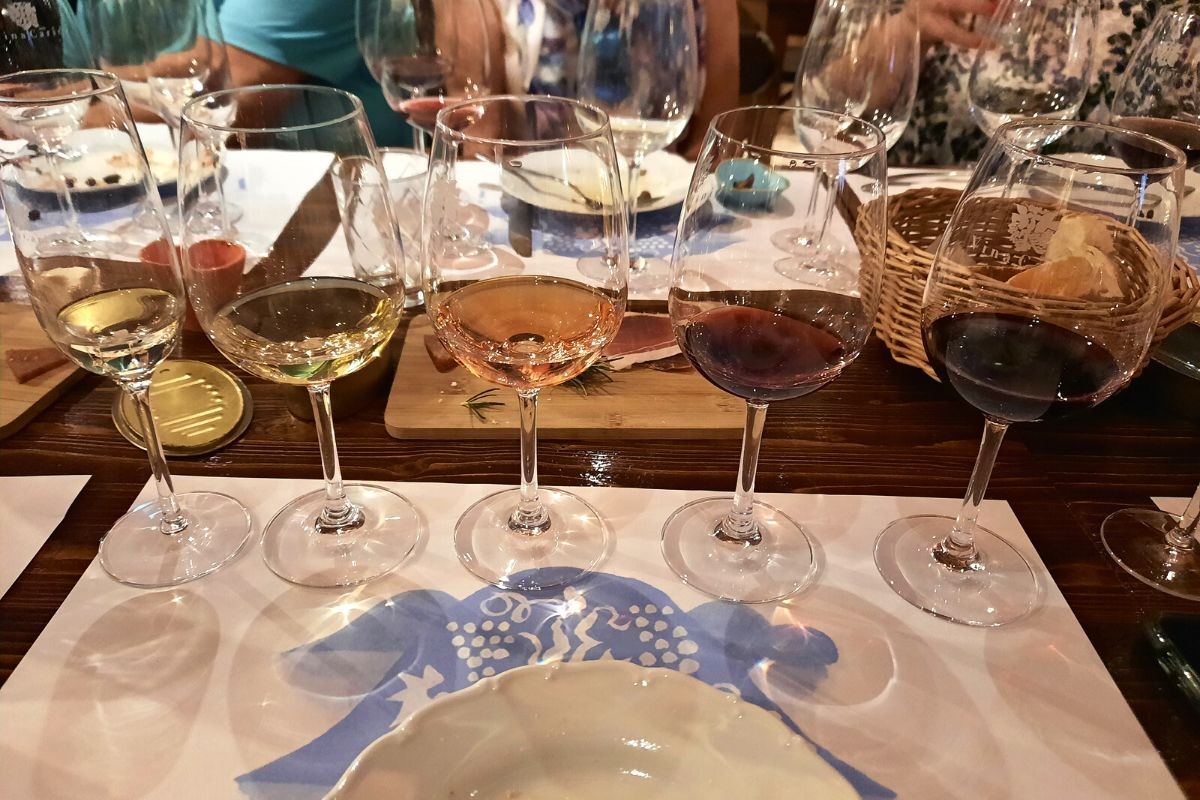
After buying a few of our favourite wines, we piled back into the combis and were brought back to Stari Grad – a little rosier in the cheeks than when we first set out. A short but wonderful tour (approx. 3 hours) which gave us a small taste of the island and island life. We arrived back just in time for dinner, and everyone took to the streets to discover what the local restaurants offered (you can ask us for our favourite picks).
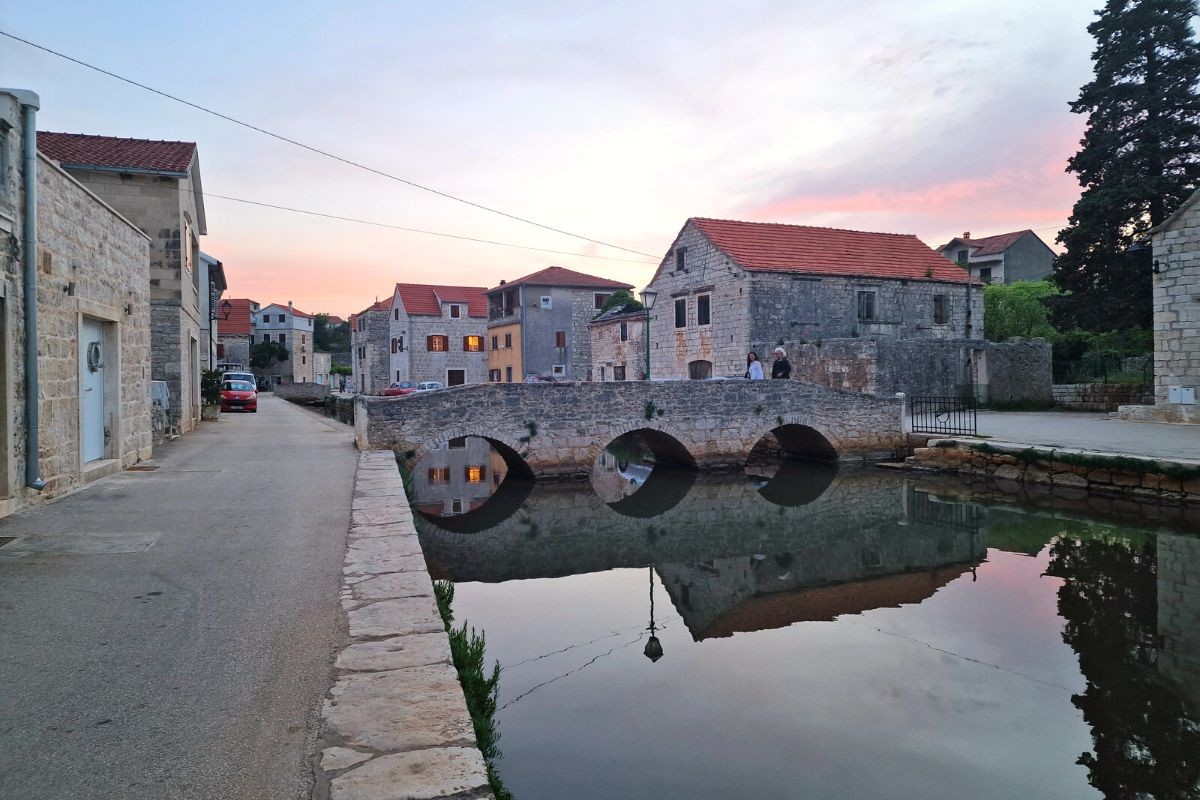
Of course, you are free to just wander the streets and soak up the relaxing vibe that Stari Grad offers. But, if you were interested in a little more, a tour like this is just enough for guests who often don’t want to be away from the boat for too long or travel too far. In those few hours, we were introduced to so much and walked away with a new love and appreciation for Hvar and Stari Grad.
When planning your charter, we never advise guests to book and plan too much in advance. But, with almost two decades worth of experience in the industry, we know which experiences our guests always enjoy and work with the best people to provide a unique experience. We would be happy to give you suggestions and help create your Croatia sailing itinerary. Feel free to contact us to speak to our team.
